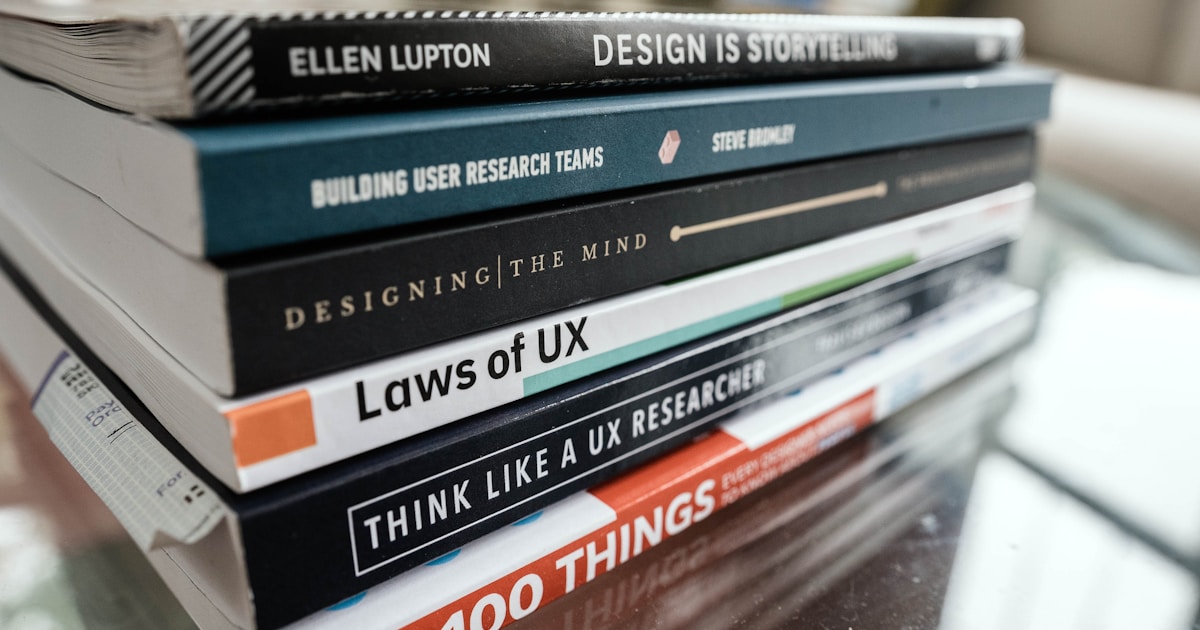The Lean Startup: UX Methodology from Eric Ries

How to build a sustainable business through validated learning and iterative development.
The Build-Measure-Learn Cycle
Eric Ries’s “The Lean Startup” introduced the world to a methodology that has transformed how we think about building products. At its core is the Build-Measure-Learn cycle—a process that has direct applications to UX design and user-centered product development.
UX Connection: The Build-Measure-Learn Cycle
The build-measure-learn cycle is fundamental to user-centered design and continuous improvement. This iterative approach aligns perfectly with how we should approach UX design:
Build
In UX terms, this means creating prototypes, wireframes, and designs based on our current understanding of user needs.
Measure
We test our designs with real users, gather feedback, and collect data about user behavior and preferences.
Learn
We analyze the results and use insights to inform the next iteration of our design.
Validated Learning in UX Design
Moving Beyond Assumptions
Ries’s emphasis on validated learning—learning through experimentation rather than assumptions—is crucial for UX designers. Too often, we design based on our own assumptions about what users want or need.
Practical applications:
- Test design assumptions with real users before building full features
- Use A/B testing to validate design decisions
- Conduct user interviews to understand actual needs, not just preferences
- Measure user behavior, not just opinions
The Minimum Viable Product (MVP) in UX
The concept of MVP applies to UX design as well:
Design MVP principles:
- Start with the core user journey and essential features
- Focus on solving the primary user problem first
- Design for the most common use cases
- Iterate and improve based on user feedback
Applying Lean Principles to UX Processes
Rapid Prototyping
The lean startup approach encourages rapid experimentation, which aligns with modern UX practices:
- Low-fidelity prototypes: Test concepts quickly and cheaply
- User testing early and often: Don’t wait until the design is “perfect”
- Iterative improvement: Make small changes and test their impact
- Fail fast: Identify problems early and pivot quickly
Continuous Deployment of Design
Just as lean startups deploy code continuously, UX teams should continuously improve and deploy design updates:
- Regular design reviews: Weekly or bi-weekly design critiques
- User feedback integration: Regular cycles of user testing and feedback incorporation
- Design system updates: Continuous improvement of design components and patterns
- Cross-functional collaboration: Regular communication with development and product teams
The Role of Metrics in UX
Actionable Metrics vs. Vanity Metrics
Ries distinguishes between metrics that drive action and those that just make us feel good. This applies to UX metrics as well:
Actionable UX metrics:
- Task completion rates
- Time to complete key actions
- User satisfaction scores
- Error rates and recovery
Vanity metrics to avoid:
- Page views without context
- Number of features without usage data
- Design awards without user impact
- Team productivity metrics without quality measures
The Cohort Analysis Approach
Ries’s emphasis on cohort analysis—comparing groups of users over time—applies to UX research:
- User journey analysis: Track how user behavior changes over time
- Feature adoption: Measure how users adopt and use new features
- Retention analysis: Understand how design changes affect user retention
- Behavioral segmentation: Analyze different user groups and their needs
Pivoting in UX Design
When to Pivot
Just as startups sometimes need to pivot their business model, UX teams sometimes need to pivot their design approach:
Signs it’s time to pivot:
- User feedback consistently indicates fundamental problems
- Metrics show declining user satisfaction or engagement
- User research reveals we’re solving the wrong problem
- Competitive analysis shows we’re falling behind
How to Pivot Effectively
- Preserve validated learning: Keep what we’ve learned about users
- Test new assumptions: Validate the new direction with users
- Communicate changes: Help stakeholders understand why the pivot is necessary
- Measure impact: Track how the pivot affects user experience and business metrics
The Innovation Accounting Approach
Measuring UX Innovation
Ries’s innovation accounting approach can be applied to measuring UX innovation:
Leading indicators:
- User engagement with new features
- Time spent in key user flows
- User feedback sentiment
- Design iteration speed
Lagging indicators:
- User retention and churn
- Business metrics (conversion, revenue)
- User satisfaction scores
- Product adoption rates
Practical Implementation
For UX Teams
- Establish learning goals: Define what you want to learn from each design iteration
- Create feedback loops: Set up regular user testing and feedback collection
- Measure consistently: Use the same metrics across different design experiments
- Share learnings: Document and share insights across the team
For Individual Designers
- Question assumptions: Regularly challenge your design assumptions
- Test early: Don’t wait for perfect designs before testing
- Learn from failures: Treat unsuccessful designs as learning opportunities
- Stay user-focused: Always prioritize user needs over personal preferences
The Bottom Line
The Lean Startup methodology provides a framework for building better products through validated learning and iterative improvement. For UX designers, this means:
- Design with users, not for them: Involve users in the design process
- Test assumptions: Validate design decisions with real user data
- Iterate continuously: Make small improvements based on feedback
- Measure what matters: Focus on metrics that drive better user experiences
The build-measure-learn cycle isn’t just for startups—it’s a fundamental approach to creating user-centered products that truly serve their users’ needs.
By applying lean principles to UX design, we can create more effective, user-focused designs that evolve based on real user feedback and validated learning.
How have you applied lean startup principles to your UX design work? What’s your experience with rapid prototyping and user testing? I’d love to hear your thoughts and continue the conversation.



